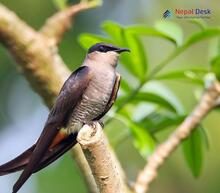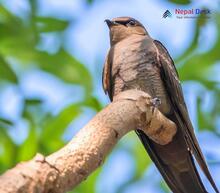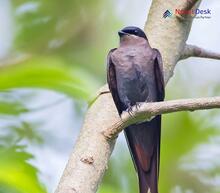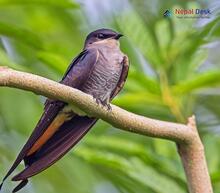Nestled in the laps of the Himalayas, Nepal is a true treasure trove for birdwatchers and ornithologists alike. Home to over 900 bird species, this mystical land offers a unique experience for those with a passion for avian diversity. Among these myriad species lies the intriguing subfamily of birds known as Cypsiurinae, lesser-known but just as captivating in their own right. Here, we'll uncover fascinating details about these birds and their remarkable existence in Nepal.
Unveiling the Cypsiurinae Subfamily
Part of the larger Muscicapidae family, which includes flycatchers and Old World chats, Cypsiurinae is a subfamily that has piqued the curiosity of many bird enthusiasts. Catapulted to fame primarily due to its elusive nature, there is much still to be learned about these enigmatic creatures. Their cryptic lifestyle and highly adapted features make them perfect inhabitants of Nepal's diverse ecosystems, from dense woodlands to open grasslands.
Exploring the Habitat Preferences
Birds within the Cypsiurinae subfamily can be found throughout Nepal's varying landscapes, from lower elevations like Terai plains and Churia hills to subtropical and temperate forests in hilly regions. These naturalists' delights favor areas that provide ample opportunities for foraging on insects—a primary food source—as well as safe nesting spots away from predators.
Distinctive Characteristics: What Sets Them Apart?
Apart from their wide-ranging habitat preferences, birds within the Cypsiurinae subfamily often boast an impressive array of physical adaptations. They typically possess strong legs and agile feet, allowing them exceptional maneuverability crucial for hunting insects and facilitating rapid ascents through dense canopy layers.
Their plumage varies across species, presenting a spectrum of hues that not only visually enthrall but also blend seamlessly with their surroundings. As masters of disguise, these birds effortlessly merge with bark, leaves, or shadows, helping them stay clear of prowling predators.
Another hallmark of the Cypsiurinae subfamily is their vocal prowess. From melodic tunes to complex trills and calls, their vocalizations serve multiple purposes—be it attracting mates, defending territories or communicating within their intricate social structures.
Conservation and the Role of Citizen Science
Despite their natural ability to evade detection, the birds within the Cypsiurinae subfamily are not immune to the threat of habitat loss brought about by rapid urbanization and deforestation in Nepal. To ensure these species continue to thrive in their natural environments, conservation efforts must be put into place.
One solution lies in promoting citizen science initiatives. Engaging local birders and nature enthusiasts can result in valuable data on bird distribution, breeding habits, and population dynamics, providing much-needed insight for conservationists working tirelessly to preserve these remarkable creatures.
The diverse bird life in Nepal offers a fascinating world to explore for anyone interested in avIFAuna. Gaining insight into the lesser-known Cypsiurinae subfamily is a prime example of the rich variety that awaits discovery in this enchanting country. As we continue to learn more about these elusive birds and work together towards conservation efforts, we can ensure that future generations can relish in the wonders of Nepal's extensive avian habitats.





